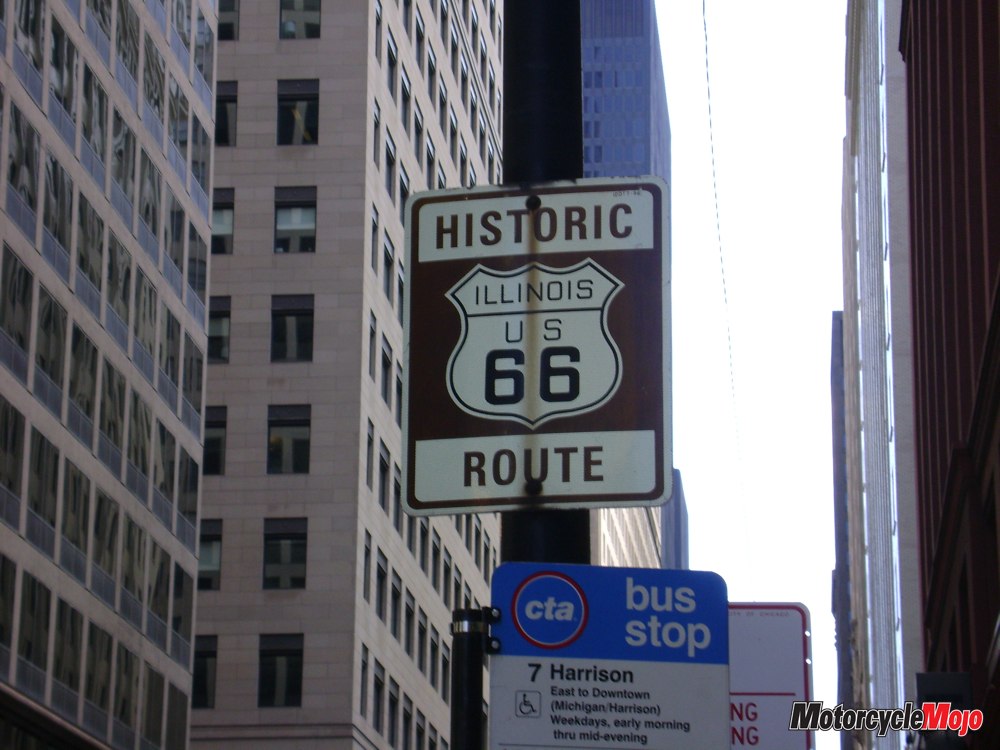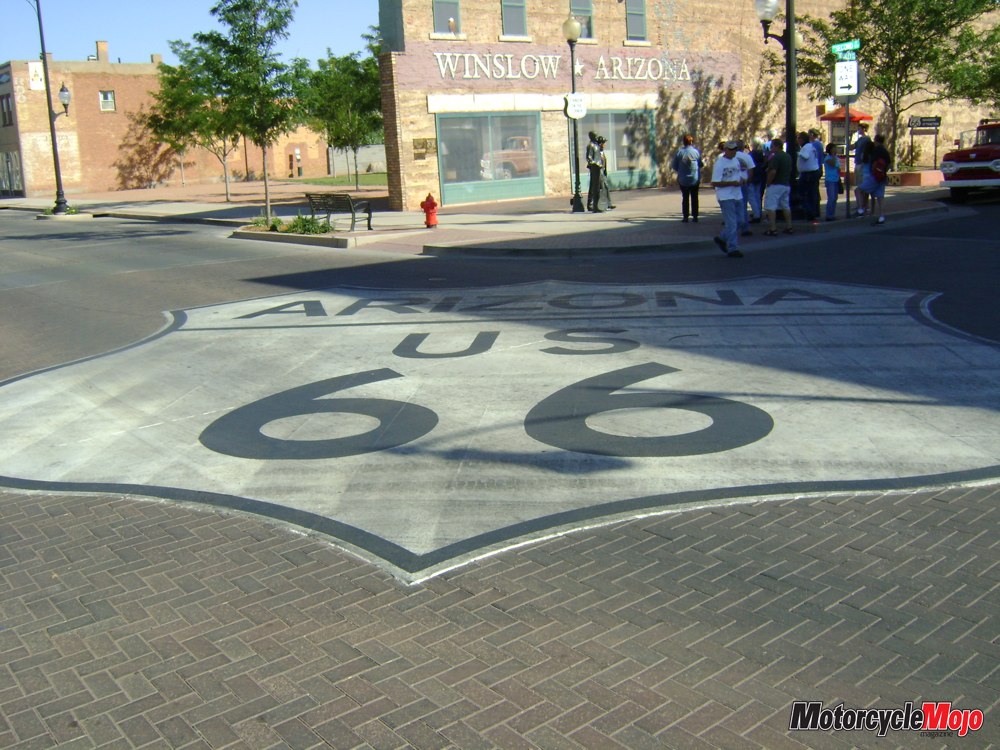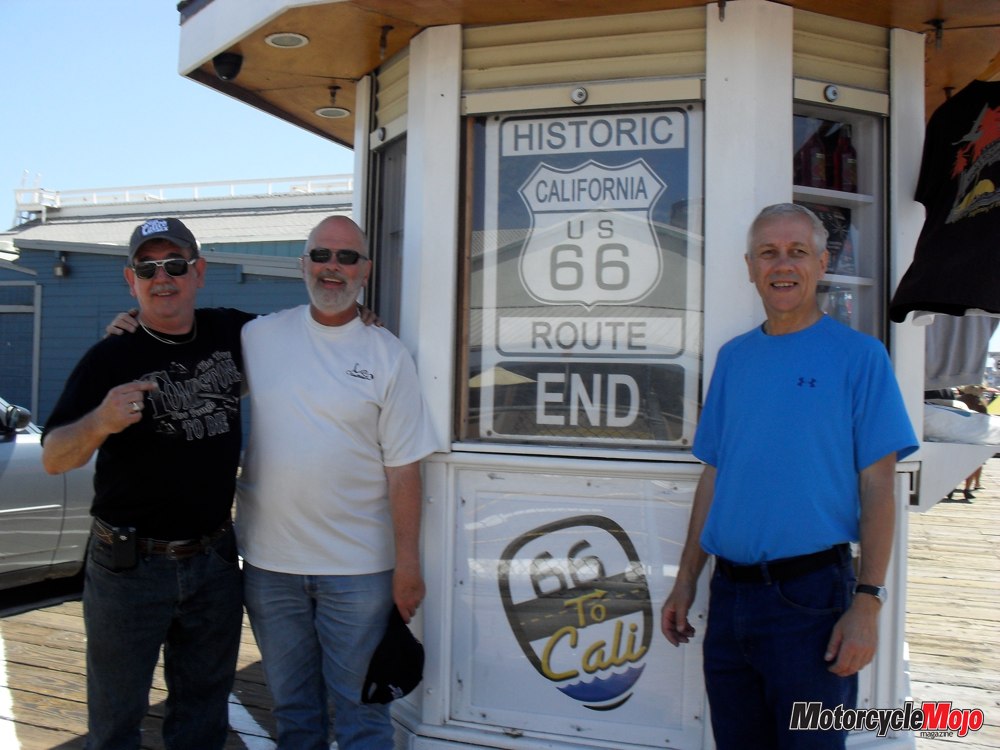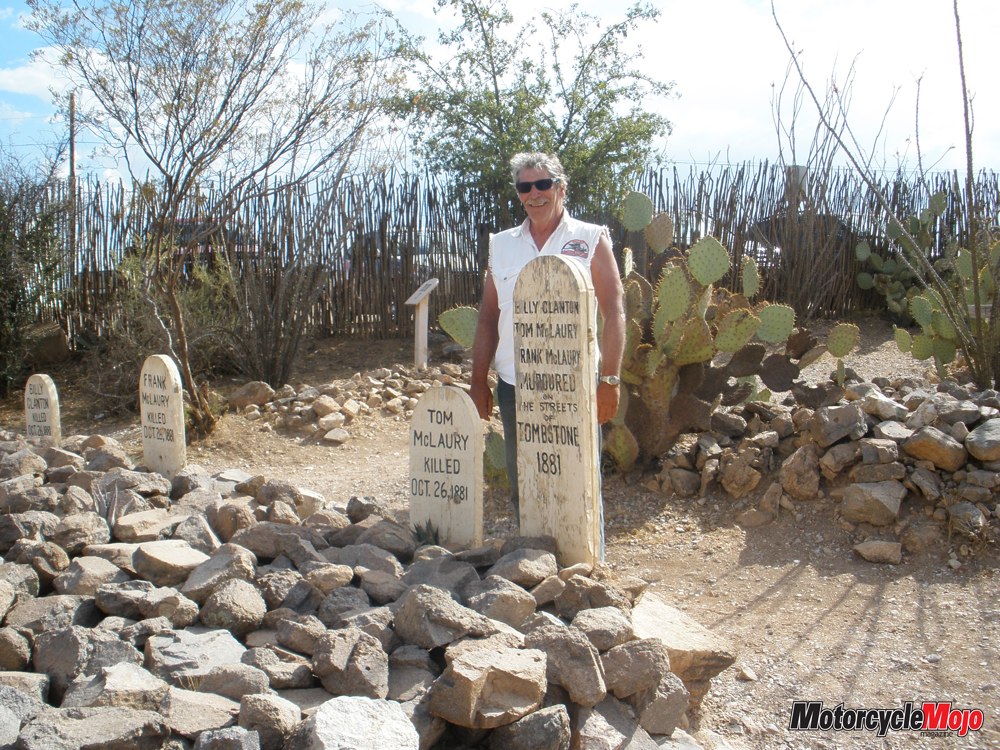Good times and fond memories will last forever after a tight-knit group of six friends complete a 16,000-kilometre odyssey
 Madrid, New Mexico, is a sleepy hamlet that might well have stayed that way if not for the fact that a movie called Wild Hogs was shot there in 2007. The comedy flick was about a group of suburban biker wannabes seeking adventure and has since transformed Madrid into a Mecca for riders from all over the world who want to have their pictures taken in front of Maggie’s Diner, the scene of a hilarious and raucous dust-up between the Hogs and their nemesis in the film, the fictional Del Fuegos MC.
Madrid, New Mexico, is a sleepy hamlet that might well have stayed that way if not for the fact that a movie called Wild Hogs was shot there in 2007. The comedy flick was about a group of suburban biker wannabes seeking adventure and has since transformed Madrid into a Mecca for riders from all over the world who want to have their pictures taken in front of Maggie’s Diner, the scene of a hilarious and raucous dust-up between the Hogs and their nemesis in the film, the fictional Del Fuegos MC.
Our team of six riders from east of Toronto arrived there in June, during the hottest summer on record. The Turquoise Trail to Madrid, which starts a few miles from Santa Fe, is a harbinger of scenic promise, with hills and picturesque houses dotting the landscape. The village itself is a charming mix of craft shops and restaurants that welcomes bikers aboard everything from dual-sports to far-out customs along the two-lane main drag.
Madrid was a sort of homecoming for us. When six of us from the All Canadian Riders Club (ACRC), aged mid-fifties to late sixties, began planning this odyssey eighteen months prior, the plan was to follow Route 66 from Chicago to the Route’s terminus at the Santa Monica pier bordering Los Angeles, California. This portion of the ride, 4,000 kilometres plus, would be complemented by travelling up the Pacific Coast Highway, taking in the Big Sur on California’s rugged coast, and heading north through Oregon and Washington before crossing the border into British Columbia. That route would eventually take us northeast through the B.C. interior to Vernon for a sensational ride down the magnificent Slocan Valley, rated by many as the finest riding Canada has to offer. The final leg was planned to take us back into America through Montana and the Dakotas for a tour of the Black Hills and Sturgis, home of the World’s Largest motorcycle rally. By the time we returned to Ontario, we would have been on the road for a month, travelled more than 16,000 kilometres and ridden through parts of eleven U.S. states, traversing more than 3,000 kilometres of mountains in the process. We called it the “Canadian Wild Hogs Route 66 and North America Tour.”
Route 66 – “the Mother Road” – is a challenge to navigate. Established in 1926, the nearly 4,000-kilometre road was removed from the U.S. Highway System in 1985, replaced by the interstate. It ebbs and flows erratically, parts of it lively and packed with locals and tourists alike, other sections left unused and forlorn in favour of the very busy Interstate 40. We reached the beginning of the Route, also called the Main Street of America, by the end of Day One when we settled down for the night near Chicago.
 On a brilliant Sunday morning, after having our pictures taken under the famous Route 66 sign marking the beginning of the trail, we met some friends for lunch at the first landmark of the Route, the famous Lou Mitchell’s Diner. After an excellent meal, we mounted our bikes and began the westward trek along the Route, where we would discover landmarks of considerably less practicality than Lou’s, like the World’s Largest Rocking Chair in Fanning, Missouri, and the famous Blue Whale in Catoose, Oklahoma, proof that you can get tourists to look at just about anything. At the Blue Whale, a swimming hole with a crudely constructed, somewhat derelict, whale-shaped water castle surrounded by murky, algae-covered water, no one was swimming despite temperatures above 40 degrees C. Southern hospitality was extended to us there by local firefighters, who treated us to ice-cold bottles of water and offered advice on local accommodations.
On a brilliant Sunday morning, after having our pictures taken under the famous Route 66 sign marking the beginning of the trail, we met some friends for lunch at the first landmark of the Route, the famous Lou Mitchell’s Diner. After an excellent meal, we mounted our bikes and began the westward trek along the Route, where we would discover landmarks of considerably less practicality than Lou’s, like the World’s Largest Rocking Chair in Fanning, Missouri, and the famous Blue Whale in Catoose, Oklahoma, proof that you can get tourists to look at just about anything. At the Blue Whale, a swimming hole with a crudely constructed, somewhat derelict, whale-shaped water castle surrounded by murky, algae-covered water, no one was swimming despite temperatures above 40 degrees C. Southern hospitality was extended to us there by local firefighters, who treated us to ice-cold bottles of water and offered advice on local accommodations.
Farther down the road in Arizona, we would discover a vibrant, commercialized Route 66 epitomized by Williams, a gateway town to the Grand Canyon, where locals and tourists cruise the strip in every form of transport available – psychedelic-painted Volkswagen vans straight out of the ‘60s, rat bikes, pedal bikes, camouflaged Jeeps, trikes, trucks, Barrett Jackson–quality muscle cars and Hertz rentals – all tooling along the main-street boulevard cheek by jowl, many with stereos ablaze. This lively ménage gave a festival feel to the town, and local shops cater to the tourist trade, many stocking the same Route 66 road signs, key rings, coffee cups and stickers we would see in many places along the Route. Williams exuded an economic confidence that is the opposite of so many other parts of the Route, like Kingman, Arizona, where the good times left as the Interstate came in and are showing no sign of returning.
Arizona offers much more to riders than tourist trinkets and overpriced meals. Highway 89A, which runs fifty kilometres from Flagstaff to Sedona, carves downward along a canyon wall featuring red rock spires, a stunning natural architecture deserving of more attention than any rider can sensibly offer under the circumstances. The road twists around switchbacks and esses that demand steady concentration and more than a modicum of technical skill.
Arriving in Sedona, we settled in for lunch in this vacation community that is home to rock stars and wealthy retirees who have the good fortune to enjoy local landmarks like Bell Rock, where you can follow various trails 1,500 metres up the mountain. Trekkers to the summit include new age types, who climb to experience a spirituality said to emanate from an energy vortex in the mountain. We settled for a cold pint at a local watering hole.
After a comfortable motel stay in the nearby village of Oak Creek, we decided to stray from the intended path to make our way southward to Tombstone, a six-hour ride that descends from the relatively lofty heights of Sedona into the hottest climes that the state has to offer. By the time we reached Phoenix, two hours later, the temperature had climbed to 43 degrees, and we still had nearly four hours to go with no respite in sight. Our first fuel stop called for an extra bottle of cold water to pour over our heads.
Rain clouds, rare in this parched territory, surrounded Tombstone on our arrival. While we were not blessed with the rain shower we so fervently hoped for, a cloud-enshrouded blazing sun was enough relief. Before checking in to a motel, we visited Boot Hill cemetery, which no Tombstone tourist should miss. Several towns throughout America’s Wild West have graveyards so named because their residents died with their boots on, rather than shuffling off their mortal coil while, say, convalescing in a nursing home or lying in bed. Stabbings, gunfights and hangings were the usual causes, and are amply reflected on the wooden tombstones, some with poetic tributes to the fallen: “Here lies Lester More, four shots from a 44. No Les no more.”
 We spent an extra day in Tombstone to take in the live theatre that recreates the infamous Gunfight at the OK Corral and other shootouts. The OK Corral is a sophisticated and authentic recreation that involves a pre-show demonstration of how the gunfight unfolded, using robotic mannequins placed in position around the same yard where the original action occurred. Patrons are then ushered into a nearby open theatre, complete with storefront recreations of the scene and live actors playing the parts of the Earps, Billy Clanton and the McLaury brothers, the latter three of whom were killed at the gunfight.
We spent an extra day in Tombstone to take in the live theatre that recreates the infamous Gunfight at the OK Corral and other shootouts. The OK Corral is a sophisticated and authentic recreation that involves a pre-show demonstration of how the gunfight unfolded, using robotic mannequins placed in position around the same yard where the original action occurred. Patrons are then ushered into a nearby open theatre, complete with storefront recreations of the scene and live actors playing the parts of the Earps, Billy Clanton and the McLaury brothers, the latter three of whom were killed at the gunfight.
The streets of the town are much as they were 130 years ago, and actors in full western garb, including holstered guns – Arizona has an open-carry weapons policy – can be met along the boardwalk. Some of the locals dress similarly, and check their very real Colt 45s with the bartender. Speaking of which, the original Big Nose Kate’s Saloon is worth a visit, and you can have your picture taken brandishing a shotgun from behind the bar.
While walking the streets we met two elderly locals, one of whom owns several Tombstone establishments, including the Harley-Davidson clothing store. In the course of chatting about our having ridden “all the way from Canada,” his companion told us, “I’m the only man in Tombstone who brought a hammer to a gunfight and won!” Turns out many years ago he had done a drywall job for a customer who was dissatisfied with the job so much so that he jammed a gun into the contractor’s face. “I blocked his finger from the trigger and smashed him in the forehead with my hammer.”
Needless to say, the fight was over. The temperature was so scorching that we resolved to depart in the wee small hours so as to get back to Flagstaff by late morning, before truly unbearable heat was upon us. Just outside of town, we encountered an unusual sight for Canadians – a makeshift checkpoint with armed guards verifying I.D.s, presumably in search of illegal immigrants. We were waved through without incident. We made our way along Interstate 40, periodically sidestepping onto Route 66 en route to the Grand Canyon and the Hoover Dam, must-sees in this part of the country for the sheer vastness and immensity of these natural and man-made icons. The 55 km ride from the Dam to Vegas was the hottest of our 30-day expedition, and despite some law-breaking speeds, we found no relief. Riding down the Vegas Strip in afternoon traffic at 45 degrees C was torture that could be outdone only by an unrequested stay in Guantanamo Bay. Relief came after we parked our bikes at Harrah’s and promptly set ourselves up at the bar closest to the entrance.
Never has cold beer tasted so good! The spacious and clean $40-a-night room was a bonus. Two weeks into the Canadian Wild Hogs tour, we crossed the border into California, and soon after, reached the terminus of Route 66 at the Santa Monica pier. It was a watershed moment, the realization of a dream for the Hogs. Next to our hotel, only a couple of blocks from the beach, was a pub where we were only too happy to sample the wide variety of beers on tap. The locals were friendly and curious about us and our long road trip, and seemed incredulous that we had so far yet to go! After a refreshing overnight stay, we departed the beautiful resort town and began the sensational ride up the Pacific Coast Highway.
The weather couldn’t have been better; the coastal air a welcome relief. For the first time since we entered the United States, we donned jackets to compensate for the morning coolness. This was the beginning of prolonged technical riding, with over 2,000 kilometres of ocean scenery and roads twisted enough to occasionally require first-gear navigation around corners. Survival demands wariness of cars, campers, trucks and trailers whose drivers might easily be distracted by the spectacular views. The turns are sharp enough that losing half of your lane to an oncoming vehicle is a butt-clenching experience. This carnival ride takes you through all of California, with perhaps the most challenging section along the Big Sur, a magnificent 140 km stretch of mountain riding that contains the highest coastal elevation in the continental United States. Equally beautiful, the coastal mountains of Oregon and Washington contained more sweepers and fewer hairpins, allowing for a slightly more relaxed approach to the ride. Over the next few days we made our way to Longview, Washington, where we made arrangements for oil changes and a new rear tire for one of the Hogs, who discovered wear to the extent of exposed cords after tearing up the mountains with abandon. Our crossing from Sumas, Washington, into Abbotsford, British Columbia, was a pleasant homecoming.
We made it to Hope, B.C., 150 km east of Vancouver, where we spent the night before departing along the famous Coquihalla Highway to Kamloops, then a three-hour ride along Highway 97 to Vernon. Wildlife is both a scenic promise and a threat to riders along all of these isolated mountain passes. We experienced this when a brown bear headed straight toward us at a fast trot, deterred finally by a prolonged blast from one rider’s air horn, hightailing it back into the forest. British Columbia offers mountain riding second to none, with the trip down the Slocan Valley’s Highway 6 a showstopper. Snow-encrusted mountaintops, fast-moving rivers, waterfalls, a ferry ride and twisties galore grace this remarkable road that lumbers along three of the four cardinal points on the compass before depositing riders, four hours later, in the gorgeous hamlet of Nakusp. Route 6 continues south and finally westward to the scenic town of Nelson, nestled in the mountains like a cat in a basket. After a delicious meal in one of the many cafés along the main street, we departed for Creston, the end of Route 6 close to the U.S. border, before continuing onward into southwestern Alberta, crossing through the Rocky Mountains via the Crowsnest Pass and spending the night in Pincher Creek in the Kootenays. Two of the Canadian Wild Hogs decided that night to return to Ontario via the Canadian prairies, mostly because one rider had never experienced them in any type of vehicle and was also concerned about expiring out-of-country medical insurance. The second rider agreed to accompany him, honouring the sensible “no one rides alone” policy.
The remaining Hogs would take the U.S. route through Montana and the Dakotas to experience Custer State Park and the Black Hills of South Dakota. From the Canadian route, Ontario seems to instantly dispel the tranquillity and arrow-straight roads of Alberta, Saskatchewan and Manitoba, endless fields of canola replaced by the scenic beauty of the Canadian Shield. The last day for the Canadian-route contingent was a nearly 1,000 km run from Wawa to Toronto, completing a sun-filled, epic adventure. The six motorcycles acquitted themselves as well as the riders – a Harley Ultra Classic, three Honda Gold Wings and two Yamaha Roadliners endured the voyage with nary a mechanical gremlin, save for one flat tire. The road trip has had a lasting impact on the six riders, who frequently greet each other at summer bike nights and winter meet ‘n’ greets with a bellowing cheer: “Wild Hogs!” There is already talk of a future Arctic adventure, and the ACRC riders are planning interim rides this summer to return to western Canada, Sturgis and the Black Hills. “Wild Hogs” is a concept now, and one we plan to enjoy repeatedly as long as our bodies and bikes are up to the task.






















































































































































